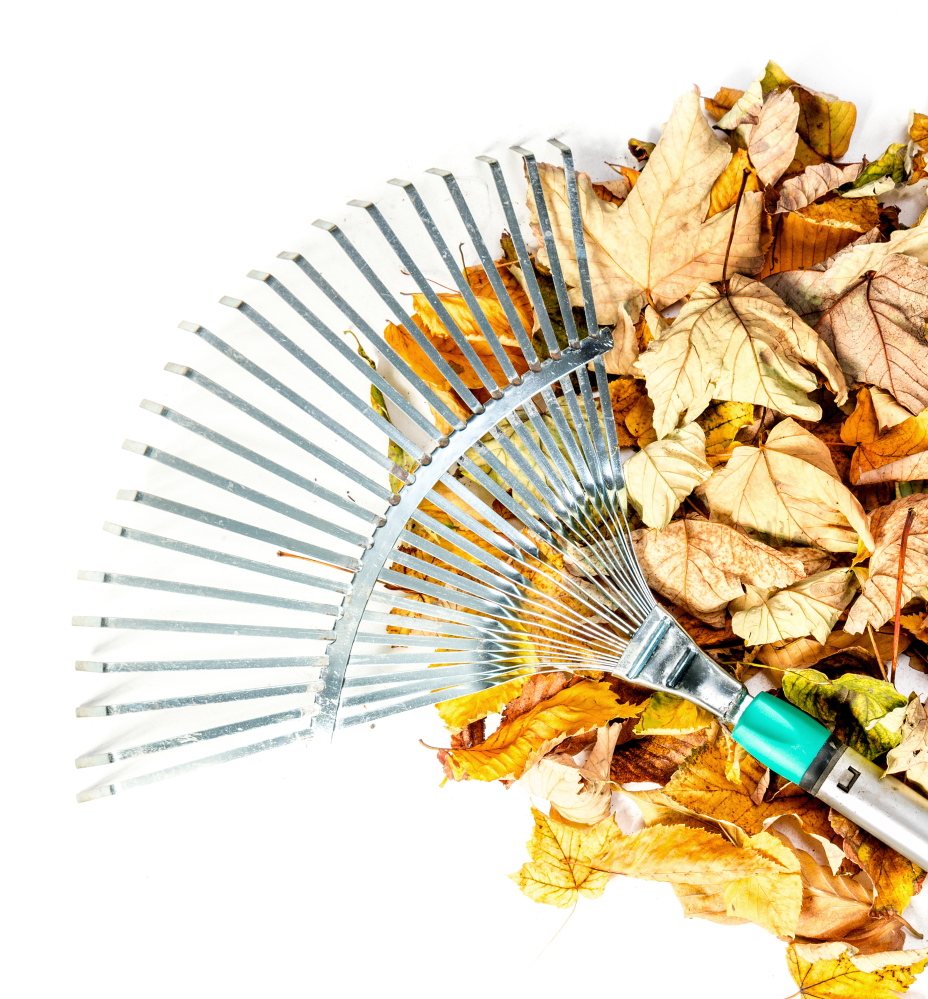You pull out your scarves and sweaters, put up the storm windows and check the flue. Like yourself and your house, you have to ready your garden for winter, too. By now, many gardeners have already done some of the work – probably just removing the perennials that were brown, yellow or limp. Now is the time to get serious.
Start with the lawn. Usually in this column, I advise that mowing your lawn tall – about 3 inches – is better. It helps lawns tolerate drought and reduces weed germination. But for the last mowing of the season, go as low as you can without scalping the turf. If the grass is shorter, it is more likely that the fall winds will blow the leaves away to the nearby woods (or your neighbor’s yard). Second, longer grass gets matted down by snow and won’t grow as well in the spring.
Speaking of leaves, you are going to have to rake the lawn. No way around it. Some people start raking when the first leaves fall – they just can’t stand the sight of them. That is too much work for me. While I don’t wait until the last leaf has fallen, I do wait until late November so that I have to rake only once. Before then, I will mow the lawn with a bagger and dump some chopped leaves on our vegetable garden. In areas around the back of the house, where natural wind patterns pile up the leaves, I pick them up and put them in our compost bins. Once our bins are full, I bring the leaves to the town compost facility.
Leaves left on the lawn all winter get matted down and smother the grass. And you do want to rake, not vacuum or blow your leaves. It’s quieter, which is nice, and it removes thatch – the roots growing above the soil line – which helps the grass grow better the next year.
Some gardeners leave their perennials in the garden all winter. They say the fallen plants serve as a mulch for the gardens. My wife and I clean out our gardens in the fall – partly because we think the standing perennials provide homes for mice, voles and other critters we prefer not to invite, but also because we have the time.
Spring is busy enough already. From my point of view, anything that can be done in the fall should be done in the fall.
We do let some perennials stay – but only those that provide winter interest, like tall grasses and tall fall-blooming sedums. The pleasure we get from looking at them during the winter is worth the added workload come spring.
As you’re cutting back plants, weed. Pull out the clover before it creeps through your garden. Yank those little volunteer spirea bushes. Weeds continue to grow in your garden until the ground freezes.
Fall is also a great time to weed your vegetable and fruit gardens. When you remove old canes from the raspberries, limp rhubarb leaves and giant asparagus fronds, you also pull out weeds. The soil will be moist, so they should come out more easily.
Once the lawn is clear of leaves, put down lime if you think the lawn needs it. You should do a soil test, but most Maine soil is acidic. It takes about six months for the lime to break down and start doing your lawn any good.
Fall is not a good time for pruning most shrubs. With spring bloomers, you would be removing next year’s buds. For late-summer bloomers, it’s better to prune when the shrubs are dormant – on a good day in March, when it is fairly warm and the wind isn’t blowing hard. Pruning a shrub or tree in fall signals the plant that it should grow a new branch; you don’t want new, tender growth as we head into winter.
It is just the right time, however, to cut back rugosa roses. The more you cut them, the more blooms you’ll get next spring; also, they can get tall and gnarly – pruning improves their shape. Put on a flannel shirt or a sweatshirt (to protect yourself from the thorns) and cut the rugosas as close to the soil as you can stand. Then weed out the goldenrod, bittersweet and asters that have rooted.
You’re not quite done: remember to dig up the gladiolus bulbs and dahlia tubers, storing them in a cool, dark and dry space (a cellar is good) until you replant them next spring. You want to make sure they have been hit by a frost, but get to them before the ground is frozen down to the depth of the bulbs or tubers. In southern Maine, that is usually before mid-November.
Some people divide and sort their dahlias, and dust them with mildew preventative. We dig them, leaving about 4 to 6 inches of stem for a handle, let them dry on the garage floor for several days and then store them for the winter in giant nursery plant pots or empty shipping boxes. We’re tired at the end of the growing season so we don’t fool around.
Once all of this is done, and your garden is spick-and-span, it’s time to sit back and read gardening books until next year’s catalogs arrive.
Tom Atwell has been writing the Maine Gardener column since 2004. He is a freelance writer gardening in Cape Elizabeth and can be contacted at 767-2297 or at tomatwell@me.com.
Send questions/comments to the editors.



Comments are no longer available on this story